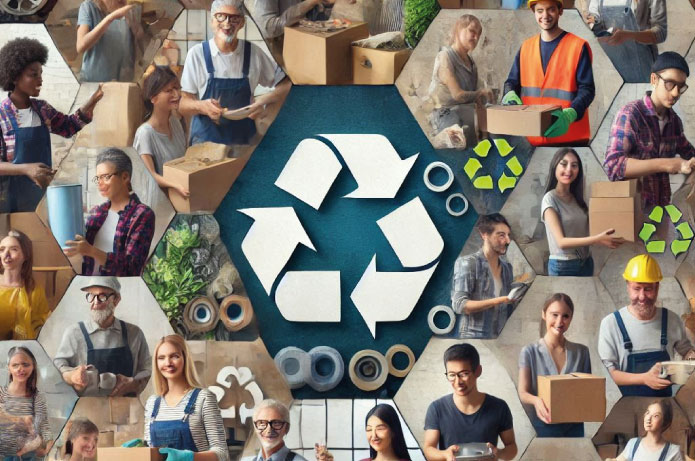Green logistics is a model focused on reducing the environmental impacts of logistics operations. This involves the use of less polluting vehicles, sustainable packaging, and optimized routes, aiming to combine efficiency with environmental responsibility.
With the increase in climate and planetary future concerns, such solutions are expanding globally. In Brazil, a report by Grand View Research indicates that this market is already worth USD 41 billion..
Furthermore, it is projected to grow at an annual rate of 7.2% until 2030, when total revenues are expected to reach USD 61 billion. Globally, various initiatives have been adopted to promote greater environmental balance in logistics.
Data reveals the global scenario of green logistics
The global green logistics market is valued at USD 1.5 trillion, according to Grand View Research, and is projected to reach USD 2.3 trillion by 2030. The expected annual growth rate is 8.1% starting from 2025.
Among the main factors driving this progress are the pursuit of stricter environmental regulations, technological innovations, and the increasing demand for sustainable practices among consumers and companies.
In the logistics sector, warehousing is the area experiencing the highest growth in sustainable solutions, accounting for 37% of the value. Regarding transportation, road vehicles represent 40% of the revenues.
Among the most prominent global initiatives are the European Union's environmental policies, such as the Green Deal, the United States' energy transition plan, and China's commitments to achieve net-zero carbon emissions.
In Brazil, sustainability in the field was discussed in April as one of the topics at Intermodal, the main logistics sector event in Latin America.
Examples of initiatives that promote environmental balance
With technological support, logistics companies in Brazil and worldwide adopt various practices to foster sustainability in the sector. The main examples are:
- Optimized routes: planning that makes transportation more efficient, reducing fuel consumption and the emission of polluting gases.
- Reverse logistics: a strategy that reuses materials and ensures the correct disposal of waste at the end of products' life cycles.
- Sustainable fleets: prioritization of less polluting vehicles and better cargo utilization to reduce the number of trips and environmental impact.
- Eco-friendly packaging: reduction of packaging use and preference for recyclable or biodegradable materials to decrease waste generation.
- Green supply chain: selection of partners that adopt sustainable practices and use eco-friendly raw materials, strengthening the environmental agenda.
Trends for 2025
Given the current scenario and the agreements planned for the coming years, green logistics is expected to continue advancing, aligned with the global sustainability movement. Among the main trends for 2025 are:
- Alternative fuels and electric vehicles: adoption of clean fuels and electric vehicles to reduce emissions in the logistics chain.
- Carbon-neutral storage: new storage centers seek to neutralize their emissions through green technologies and environmental compensations.
- AI-optimized routes: solutions that enhance route planning, saving fuel and reducing environmental impact.
- Expanded reverse logistics: companies expand the collection and reuse of packaging and products, minimizing waste and encouraging the circular economy.
- Green supply chain: sustainable integration among suppliers, prioritizing eco-friendly materials and responsible practices throughout the chain.
These practices contribute to reducing pollution in logistics activities in the long term, promoting greater operational efficiency and less environmental impact.


